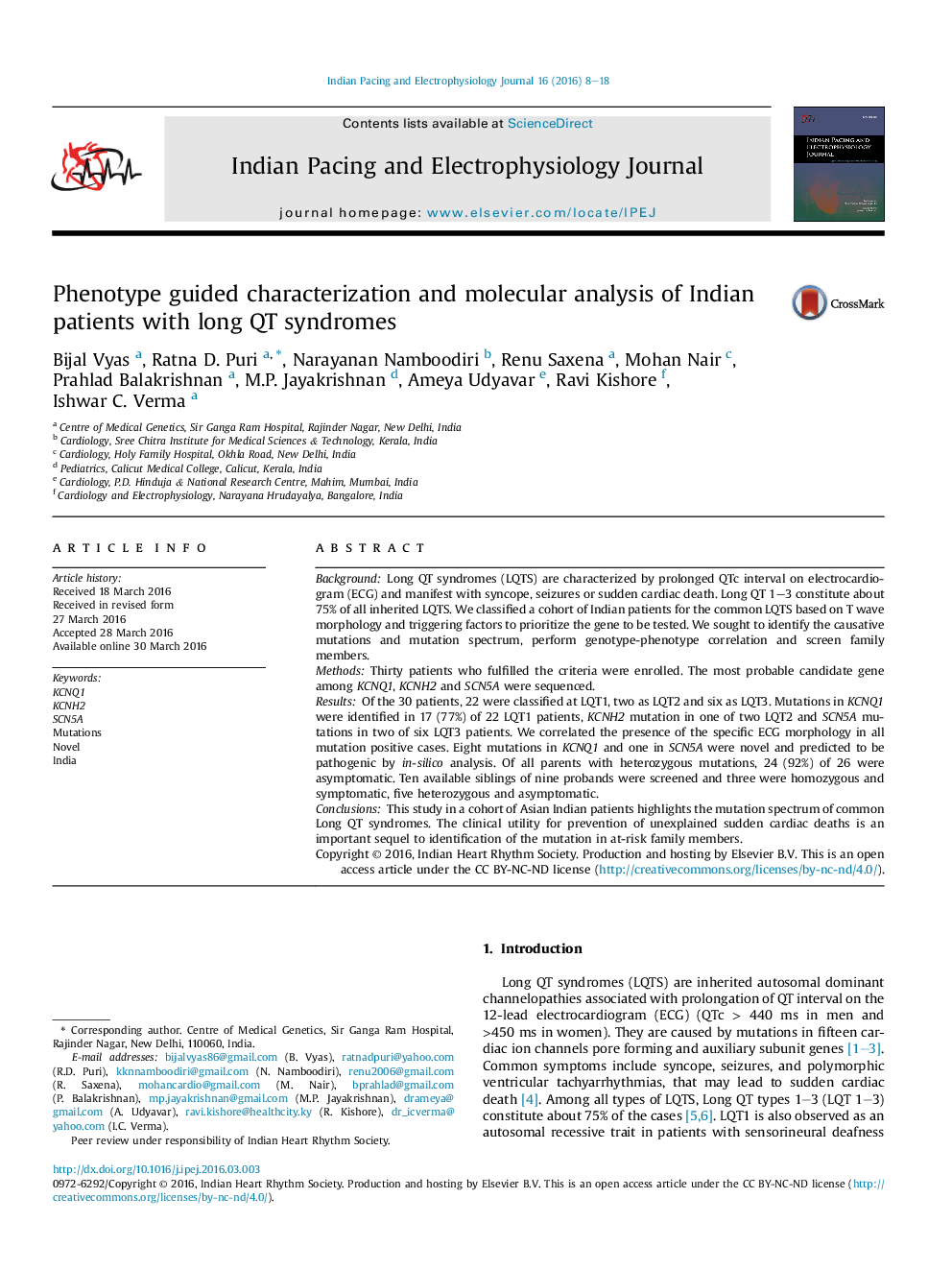| Article ID | Journal | Published Year | Pages | File Type |
|---|---|---|---|---|
| 2928327 | Indian Pacing and Electrophysiology Journal | 2016 | 11 Pages |
BackgroundLong QT syndromes (LQTS) are characterized by prolonged QTc interval on electrocardiogram (ECG) and manifest with syncope, seizures or sudden cardiac death. Long QT 1–3 constitute about 75% of all inherited LQTS. We classified a cohort of Indian patients for the common LQTS based on T wave morphology and triggering factors to prioritize the gene to be tested. We sought to identify the causative mutations and mutation spectrum, perform genotype-phenotype correlation and screen family members.MethodsThirty patients who fulfilled the criteria were enrolled. The most probable candidate gene among KCNQ1, KCNH2 and SCN5A were sequenced.ResultsOf the 30 patients, 22 were classified at LQT1, two as LQT2 and six as LQT3. Mutations in KCNQ1 were identified in 17 (77%) of 22 LQT1 patients, KCNH2 mutation in one of two LQT2 and SCN5A mutations in two of six LQT3 patients. We correlated the presence of the specific ECG morphology in all mutation positive cases. Eight mutations in KCNQ1 and one in SCN5A were novel and predicted to be pathogenic by in-silico analysis. Of all parents with heterozygous mutations, 24 (92%) of 26 were asymptomatic. Ten available siblings of nine probands were screened and three were homozygous and symptomatic, five heterozygous and asymptomatic.ConclusionsThis study in a cohort of Asian Indian patients highlights the mutation spectrum of common Long QT syndromes. The clinical utility for prevention of unexplained sudden cardiac deaths is an important sequel to identification of the mutation in at-risk family members.
